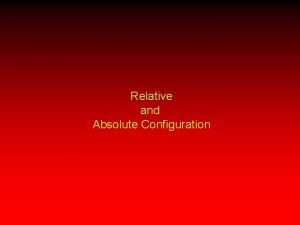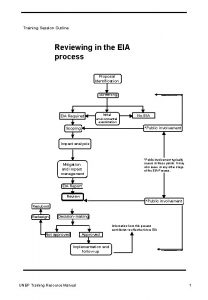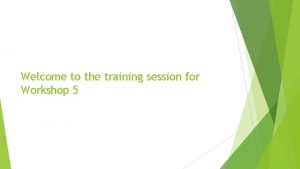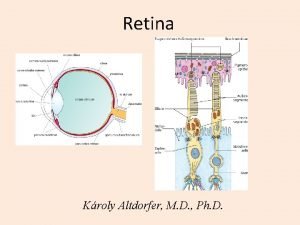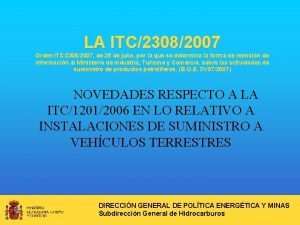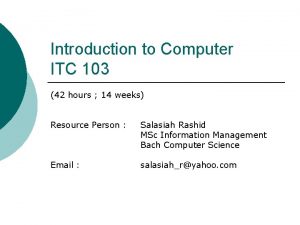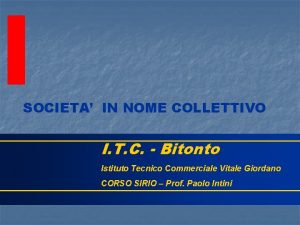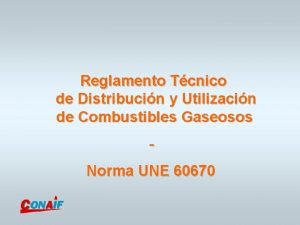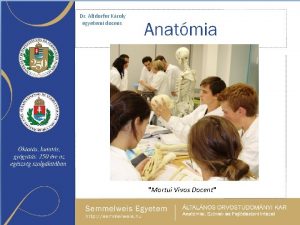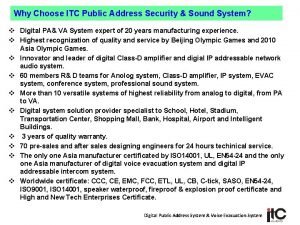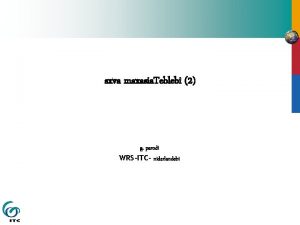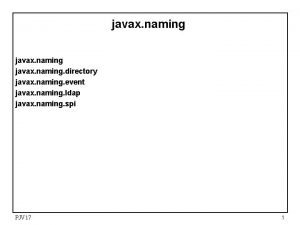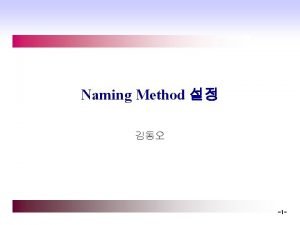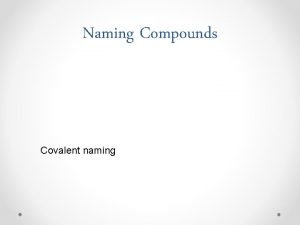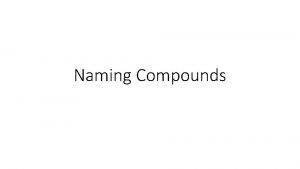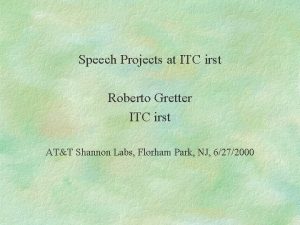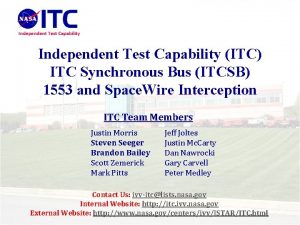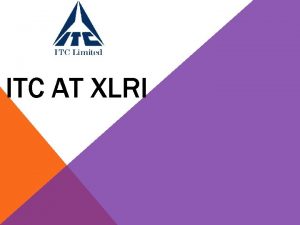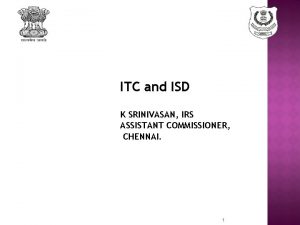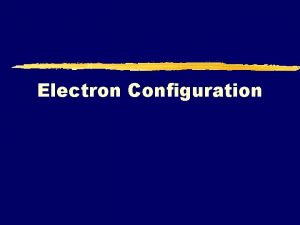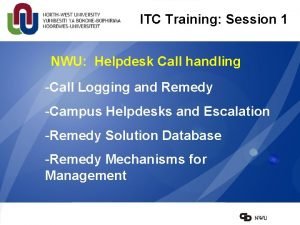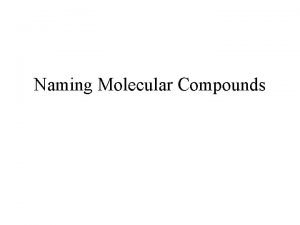ITC Training Session 2 Pc Naming Configuration 1




































- Slides: 36

ITC Training: Session 2 Pc Naming Configuration 1. WEB REGISTER 2. FIXNAME 3. MCAFEE AGENT SETUP

WEBREG • Why use Webreg? – Take control over network infrastructure – Ease of information – Better Security • Clients needs to contact helpdesk to connect pc to network – Management of connecting computers – Uses DHCP to assign IP addresses ( statically assigned )

Webreg: Requirements before a registration is made • 1 Make sure the Client’s Tcpip settings are correctly set up for DHCP • 2 The mac address of local network interface card (NIC) • 3 The subnet where the PC is currently standing • 4 The user’s network ID

Webreg: 1. Client Settings • The Tcpip Properties and under Advanced, the DNS tab must be set up for DHCP to assign IP addresses.

Webreg: 2. Finding the Mac Adres • 2 Ways! 1. Click on Start -> Run and type in CMD and enter – Type in ipconfig /all and enter – The Mac Address will be the Physical Address of the NIC

Webreg: Finding the Mac Adres (Cont. )

Webreg: Finding the Mac Adres (Cont. ) 2. Right Click Local Area Connection under Network Connections • • • Status Support Details

Webreg: Finding the Mac Adres (Cont. )

Webreg: Finding the Mac Adres (Cont. )

Webreg: Subnet and Hostname • The Hostname is the users personnel number and this must be made available to the person that will run the Webreg program. • The Subnet must also be known. ITC can be contacted if the Campus IT staff is unclear about the subnet assigned for the pc that needs to be webreged.

Webreg: Where do I find the interface? • Using the URL in IE 6 – https: //koste. puk. ac. za/webreg • Access is given via Novell authentication • Following slide shows the login screen in Webreg

Webreg: Interface: Internet Explorer Click on Yes

Webreg: Interface: Internet Explorer Novell Credentials is required to log on to Web Register

Webreg: Page Display See Next Slide

Webreg: Description of tabs • Hostname: = P(University Number of client) • Mac: = NIC Physical address • Subnet: = Where computer connects to network • Description: = Can be left blank • Save: = Register PC on Network • Search: = Looking for PC on Network

Webreg: Name Conventions • Each additional pc for the same user is registered with a “-” and then the number following (counting the number of pc’s the user has) • Example: p 10075291 is the hostname of pc 1 and p 10075291 -2 is the hostname of the second pc of the same user. • Very IMPORTANT!!!! ONLY the “-” is allowed apart from alphanumeric characters. As convention we use the “p” for personnel ( or “s” for students ) and then followed by the personnel/student number ( any number between 0 -9 )

Webreg: Example: New Registration Click Save

Webreg: Example: “Save” Results

Webreg: Search • A few Search Examples – Search by Hostname and/or – By Subnet. – Use * as a wildcard in searches

Webreg: Example: Input to see all itbab* entries Click Search

Webreg: Search Results

Webreg: How to activate IP Address • After a new ID is saved on the Webreg site it is updated on the Nameserver & in the DHCP Leases file • The update happens in intervals of 5 minutes • Restart the pc after you registered the PC on webreg • In a Command Prompt verify that the pc has a valid IP address using the Ipconfig /all command • An example of an valid IP address is as follows 143. 160. *. *

Webreg: How to activate IP Address (cont) • • What to do if you don’t have a valid IP address after you rebooted the pc 2 Options: 1. In a command prompt type in • ipconfig /release (This releases the current Apipa ip address automatically assigned by Microsoft Windows) and ipconfig /renew (This will contact the DHCP server to verify if there is a valid IP assigned to the computers Physical Address. It will then assing a valid IP for the client pc)

Wegreg: How to activate IP Address: Option 1: Ipconfig • • It is sometimes necesarry to run the ipconfig /renew command more than once, this is due to the fact that the update takes place in intervals of 5 minutes The following slide shows a typical ipconfig /release & ipconfig /renew instruction

Wegreg: How to activate IP Address: Option 1: Ipconfig

How to activate IP Address: Option 1: “Ipconfig /all” – output • DHCP gives out not only the ip but all required TCPIP info: Suffixes, Gateway and DNS Server addresses:

Webreg: Activate IP Address: Option 2: Repair Connection 2. Repair the network connection: • Right Click Local Area Connection under Network Connections • Status • Support • Repair (Sometimes needs to be done more than once)

Webreg: Activate IP Address: Option 2: Repair Connection

Webreg: Activate IP Address: Option 2: Repair Connection

Fixname • Why? – To set the computer name as Unique – To make sure the pc and hostname are linked – better control and for simplicity – For the sake of the Mcafee Epo server and management of computers – it needs unique names

Fixname: Prerequisite: DNS • Webreg must have been run for the Computer as Fixname does a nslookup and then it writes the name found for the local ip address as the computername • To make sure please run “ipconfig /all” on the pc to be fixnamed. If the ip is in the “ 143. 160. x. x” range the regsiter was sucessful. Ipconfig /release and Ipconfig /renew can be run if the webreg was done seconds ago – or just restart the pc if the 143. 160. x. x network ip is not allocated.

Fixname: File Output • • • IP Address: 143. 160. 34. 24 Host Name: ITBABM 2 Netbios Name: ITBABM 2 DNS Name: ITBABM 2 Always reboot the pc after this has been done and before continuing with fixagent.

Fixagent: Prerequisites • 1. Pc must have a valid IP and hostame in DNS. Webreg must have been executed. • 2. Fixname must have been executed so that the computername used by Mcafee to generate the Agent guid is unique • 3. Verify by using ipconfig /all in command prompt ( for DNS ) or the “Hostname” command ( to see the computername. )

Fix. Agent: Agent Issue explained • When imaged pc’s are connected the GUID in the Registry will match that of the original pc from which the image was made. Mcafee overwrites the entry with the same guid in its database with the entry from the agent that last connected to the server. Thus only one entry exists in Mcafee for all pc’s with the same guid. • Fix. Agent. exe fixes this issue. • When executed it runs in the background. Give it a minute or two and then connect to the agent interface on the pc: http: //localhost: 8081 to verify the agent is running.

New / Imaged Pc setup review: • Get the subnet, mac address and hostname and Webreg the pc. • Use Ipconfig (or details tab via the connection properties) to see if the Ip is in the 143. 160. x. x. range. • Fixname the pc and reboot. • The hostname can be checked with the Hostname command. • Run Fix. Agent. Give it a minute or two to finish in the background. Check the localhost: 8081 http URL to verify the agent is running.

Finish • Other things to remember to check for: • Printer installed after login to novell? • Remedy ID ( When logged into novell and run “Requester. exe” from desktop ). • Run Groupwise ( log into Novell and run ) • Netmeeting: Set up User ( Start, run, and type “conf” and go through the prompts )
 Itc-01 itc-02 itc-03 and itc-04
Itc-01 itc-02 itc-03 and itc-04 Absolute vs relative configuration
Absolute vs relative configuration Relative configuration
Relative configuration Electron configuration vs noble gas configuration
Electron configuration vs noble gas configuration Chrhh
Chrhh Training session outline
Training session outline Facilitate learning session meaning
Facilitate learning session meaning Training session design
Training session design Welcome to the training session
Welcome to the training session Talk boost tracker
Talk boost tracker Team4 nyla
Team4 nyla Semmelweis.itc
Semmelweis.itc Itc vincenzo benini
Itc vincenzo benini Maquiavelo y moro
Maquiavelo y moro Itc/2308/2007
Itc/2308/2007 Vision of itc
Vision of itc Scuola alessandrini montesilvano
Scuola alessandrini montesilvano Itc ginanni
Itc ginanni Itc bodoni parma
Itc bodoni parma Itc 103
Itc 103 Ilo turin
Ilo turin Istituto casagrande terni
Istituto casagrande terni Itc bitonto
Itc bitonto Itc-icg 09
Itc-icg 09 Itc logo
Itc logo Itc bodoni parma
Itc bodoni parma Itc tannoia
Itc tannoia Itc renato serra
Itc renato serra Itc vittorio emanuele
Itc vittorio emanuele Ilo training center turin
Ilo training center turin Itc boselli
Itc boselli Itc federico cesi terni
Itc federico cesi terni Altdorfer károly
Altdorfer károly Itc pa system
Itc pa system Sicle itc
Sicle itc Auladigital itc
Auladigital itc Baggi registro elettronico
Baggi registro elettronico




